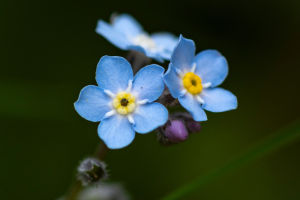The peony (Paeonia) is a flowering plant known for its large, lush blooms and captivating fragrance. Originating from Europe, Asia, and North America, peonies are renowned for their vibrant colors and impressive size.
They come in a variety of types, including herbaceous peonies, which die back to the ground each winter, and tree peonies, which maintain woody stems year-round. Hybrid varieties also exist, offering an array of colors from soft pastels to vivid hues.
Why is it So Popular?
1.Striking Appearance: Peonies are celebrated for their large, showy blooms that can reach up to 10 inches in diameter. Their petals, which can be single, semi-double, or fully double, create a dramatic effect in gardens and floral arrangements.
2.Fragrance: Many peony varieties are known for their sweet, floral scent, which adds an extra layer of appeal. The fragrance is subtle yet intoxicating, making peonies a favorite in bouquets and floral displays.
3.Longevity: Peonies are perennial plants, meaning they return year after year. With proper care, they can thrive for decades, providing long-term beauty and value to gardens.
4.Symbolism: Peonies are often associated with romance, prosperity, and good fortune, enhancing their appeal as gifts for special occasions.
Easy Peony Care - Grow Peonies That Bloom For Decades
Video by Gardening Know How
How to Take Care of Peonies in Daily Life
1.Planting: Peonies prefer well-drained soil with a neutral to slightly acidic pH. Plant them in a sunny to partially shaded location. Herbaceous peonies should be planted with the eyes (buds) 1-2 inches below the soil surface, while tree peonies should be planted with the graft union just above the soil.
2.Watering: Water peonies regularly, especially during dry periods. However, avoid overwatering as peonies do not like soggy soil. A deep watering once a week should suffice.
3.Fertilizing: Feed peonies with a balanced, slow-release fertilizer in early spring as new growth begins. Avoid high-nitrogen fertilizers, which can promote leaf growth at the expense of blooms.
4.Pruning: For herbaceous peonies, cut back the foliage in late fall or early spring before new growth starts. For tree peonies, prune only to remove dead or damaged wood. Avoid heavy pruning as it can reduce flowering.
5.Pest and Disease Control: Keep an eye out for common issues like ants, which are attracted to the nectar, and fungal diseases such as powdery mildew. Use appropriate treatments and maintain good garden hygiene to manage these problems.
When is the Right Time to Give Peony Flowers?
Peonies are ideal gifts for a variety of occasions. They are particularly popular in late spring and early summer when they are in full bloom. Common occasions to give peonies include:
1.Weddings: Their romantic symbolism makes them a perfect choice for bridal bouquets and floral decorations.
2.Mother’s Day: The lush, beautiful blooms make peonies a cherished gift for mothers.
3.Anniversaries: Peonies symbolize prosperity and good fortune, making them a thoughtful choice for celebrating milestones.
4.Special Celebrations: Their stunning appearance also makes them a fitting choice for birthdays, graduations, and other significant events.
Lykkers, peonies are a versatile and elegant flower that enhances any garden or bouquet. Their striking blooms and delightful fragrance, combined with relatively simple care, make them a beloved choice for gardeners and floral enthusiasts alike.


